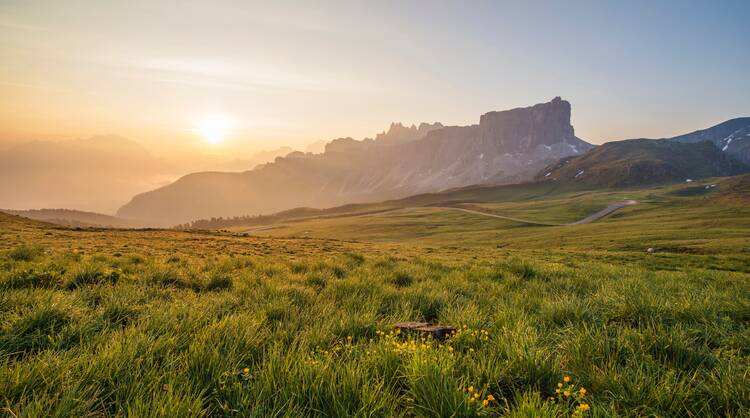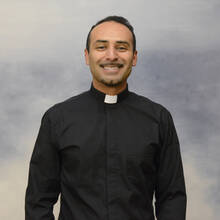The theological landscape of Jesus
When artists speak of a “landscape,” they mean a variety of features that form an integrated whole. Mountains, rivers, trees, buildings, roads all contribute their own aesthetic qualities to an overall beauty that transcends any one of them. In nature there are landscapes that resist description. Likewise, this Sunday's Gospel reading invites the reader to walk into the theological landscape of the person of Jesus.
Behold, the Lamb of God, who takes away the sin of the world. (Jn 1:29)
How can you deepen your appreciation of Jesus in the Eucharist?
How would you describe the elements you see in the landscape of Christ?
How do you feel moved at this moment in your life to follow the Lamb of God more intimately?
The capacity to capture the aesthetic realities of a landscape reaches a limit. One falls short even in an age of Instagram perfection. No secondhand means can convey the reality of beauty. One must encounter the real thing and enter it personally. For example, I’ve strolled many times at sunset along an easement next to a canal that winds past the base of the Mission Mountains here in Montana, but I have never been able to capture the majesty of the valley’s light to the west with my digital camera.
In the opening verses of the Gospel of John, the Evangelist attempts to describe the theological landscape of Christ. Jesus is loaded and piled with biblical titles such as “the Word,” “the Beginning,” “Life,” “True Light,” and as “the Father’s only Son” (see Jn 1:1-9, 14). The Gospel draws on titles and concepts from deep in Israel’s religious tradition to present a textured and nuanced image of Jesus. Like a stunning landscape that draws its beauty from a variety of elements, so Jesus’ significance comes from multiple theological traditions he encompasses.
The Baptist desires his disciples to see the landscape that he sees, to have the same experience of Jesus that so moved him. His insight that Jesus was the "Lamb of God" was not the product of some automatic conversion, but rather the fruit of extensive spiritual preparation. Through his study and life, he had already "entered the landscape" of Christ. This prepared him to behold the Lord's invisible glory and proclaim, "Behold, the Lamb of God!" (Jn 1:29).
Like the light of the Mission Mountains, the full experience of Jesus' salvation is a reality that cannot be captured in word or image, but must be entered and experienced to be understood.
It is Jesus’ invisible landscape that is revealed in this Sunday’s Gospel. Last week, on the Feast of the Epiphany, the longing to see the newborn child was a longing to witness love-in-flesh, the divine one in skin like ours. This Sunday, by contrast, the Baptist challenges the reader to see deeply, to witness in the incarnate Christ a landscape of divine glory. His command, "Behold!" challenges disciples in every age to recognize the Lamb of God right in front of them and to enter into the spiritual landscape that Jesus represents.
The deepest roots of the title "Lamb of God" are the Passover lamb (Ex 12:1-28), the blood of which protected Israel from the final plague. For Catholics, the title also evokes the prayer in every Eucharistic liturgy, "Behold the Lamb of God, behold him who takes away the sins of the world." Like the light of the Mission Mountains, the full experience of Jesus' salvation is a reality that cannot be captured in word or image, but must be entered and experienced to be understood. You can try to describe the landscape of the Lamb of God, but only by walking along it and upon its path can you ever be changed by its beauty.








